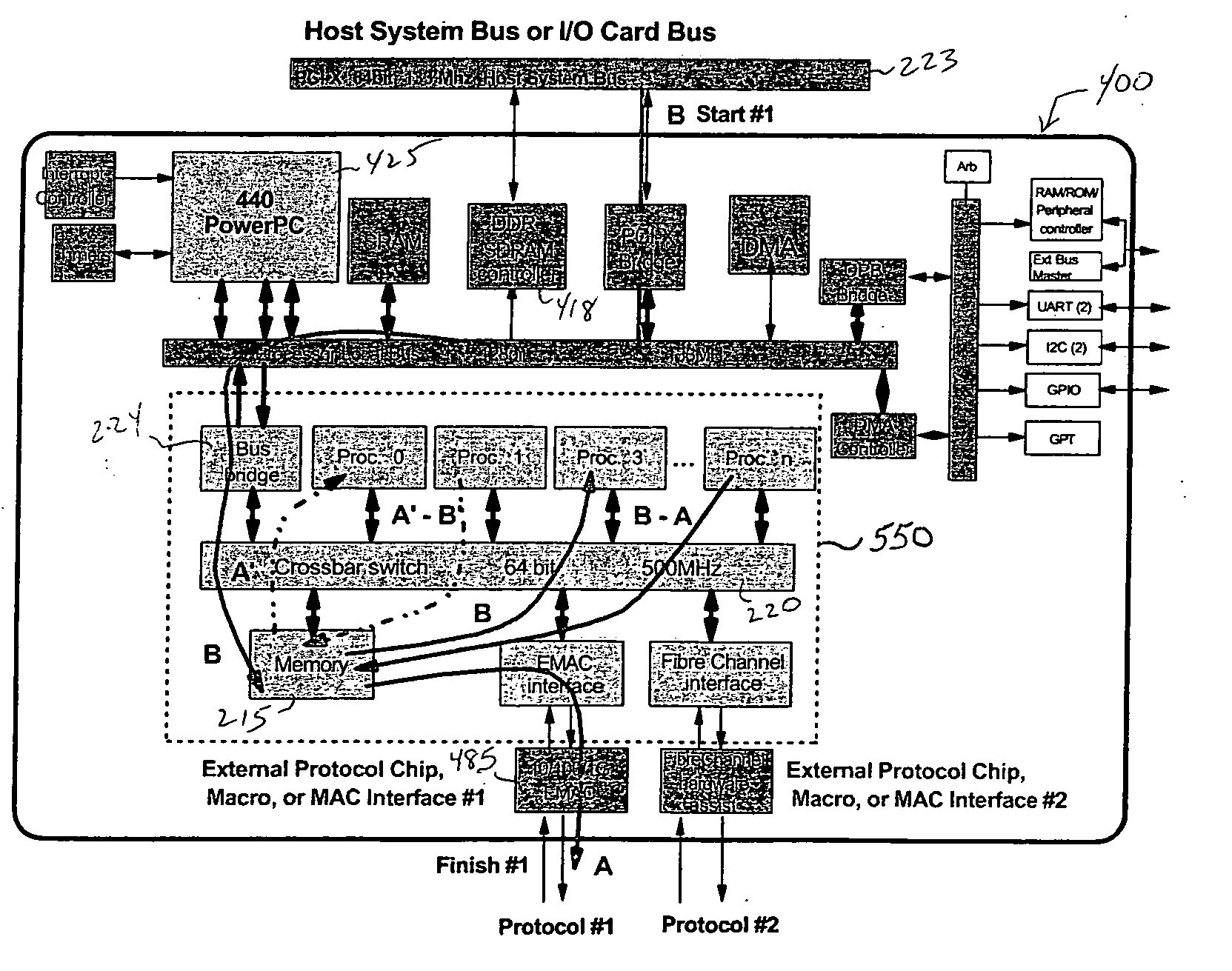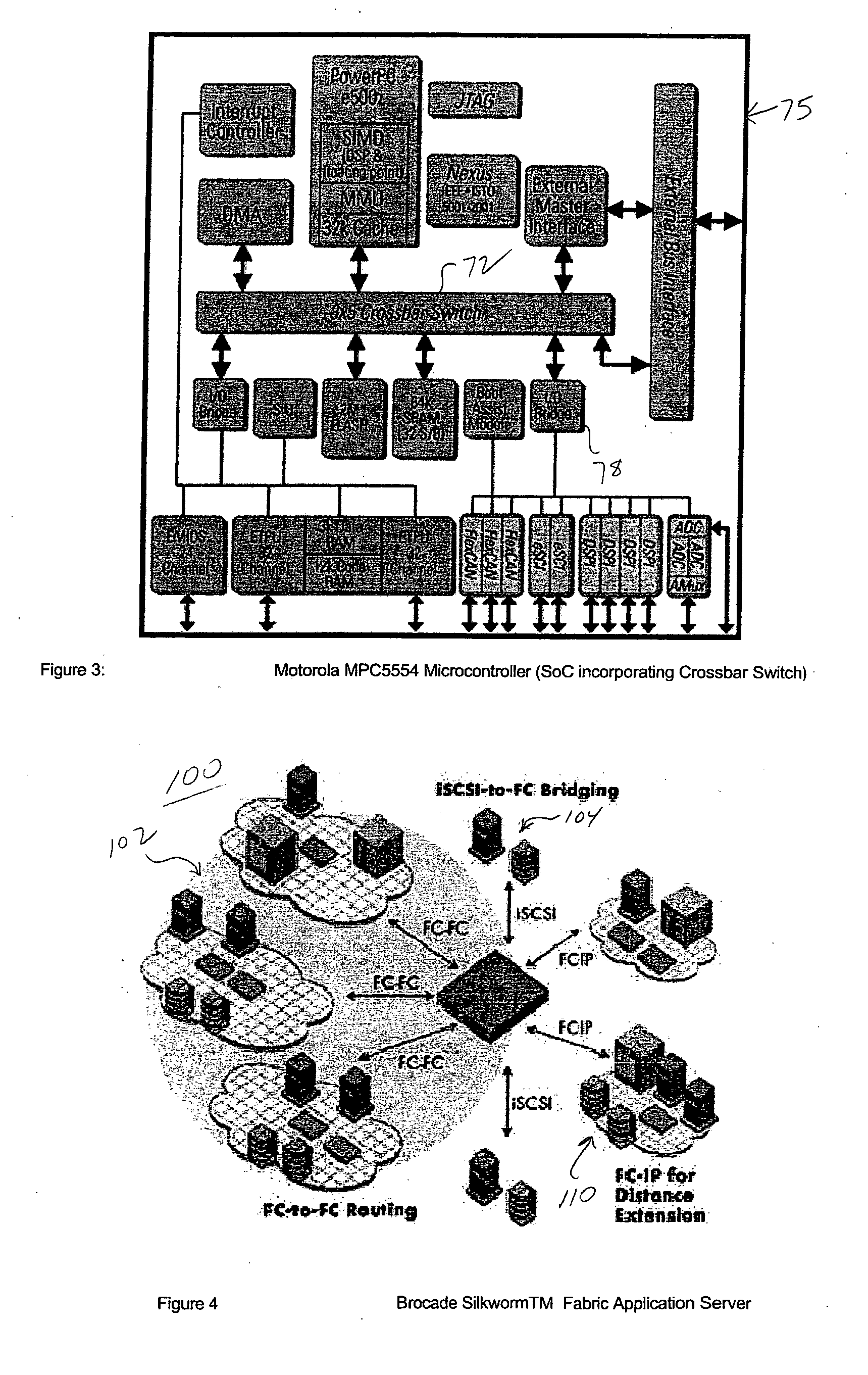Single chip protocol converter
a protocol converter and single chip technology, applied in the direction of general purpose stored program computers, instruments, and multiple processing units, can solve the problems of not being programmable or very limited in programmability, bulky and expensive products and being too expensive in terms of unit cost, space and power
- Summary
- Abstract
- Description
- Claims
- Application Information
AI Technical Summary
Benefits of technology
Problems solved by technology
Method used
Image
Examples
Embodiment Construction
[0049] As will be referred to herein, the term “Protocols” refers to any specific Input / Output (I / O) communication data physical layer stream, typically specified by a standards body, or could be a company internal proprietary interface, with examples including, but not limited to: Fibre Channel, Gigabit Ethernet, iSCSI, IP, TCP / IP, FC-IP, ESCON, FCON, CAN, SAMBA, DSL, VoIP, MPLS, GMPLS, and many more.
[0050] In the described embodiments, the protocol is a communication protocol such as Fibre Channel, Ethernet, iSCSI, ESCON, FCON, IP, layered, or encapsulated protocols such as FC-IP, IP / MPLS, etc. A data communications protocol typically has data bits arranged in bytes, words or sets, frames, and packets, with control characters such as the start of frame, end of frame, source, destination, etc., as well as the actual data in the payload of the bit stream.
[0051] The protocol converter of the present invention.employs a special processor and is implemented as either a standalone or ...
PUM
 Login to View More
Login to View More Abstract
Description
Claims
Application Information
 Login to View More
Login to View More - R&D
- Intellectual Property
- Life Sciences
- Materials
- Tech Scout
- Unparalleled Data Quality
- Higher Quality Content
- 60% Fewer Hallucinations
Browse by: Latest US Patents, China's latest patents, Technical Efficacy Thesaurus, Application Domain, Technology Topic, Popular Technical Reports.
© 2025 PatSnap. All rights reserved.Legal|Privacy policy|Modern Slavery Act Transparency Statement|Sitemap|About US| Contact US: help@patsnap.com



